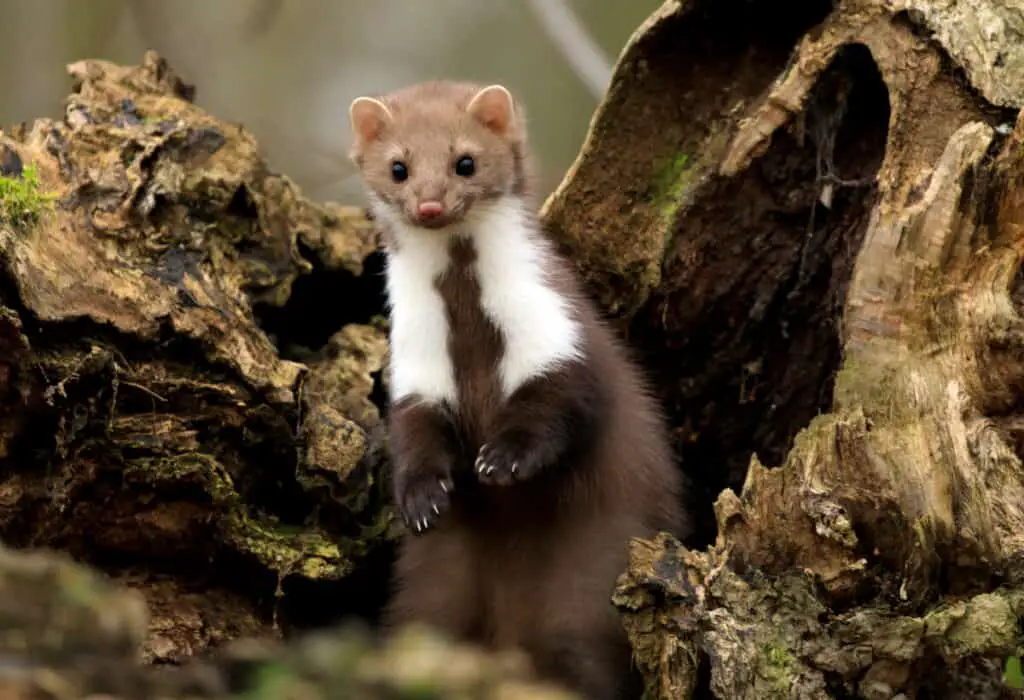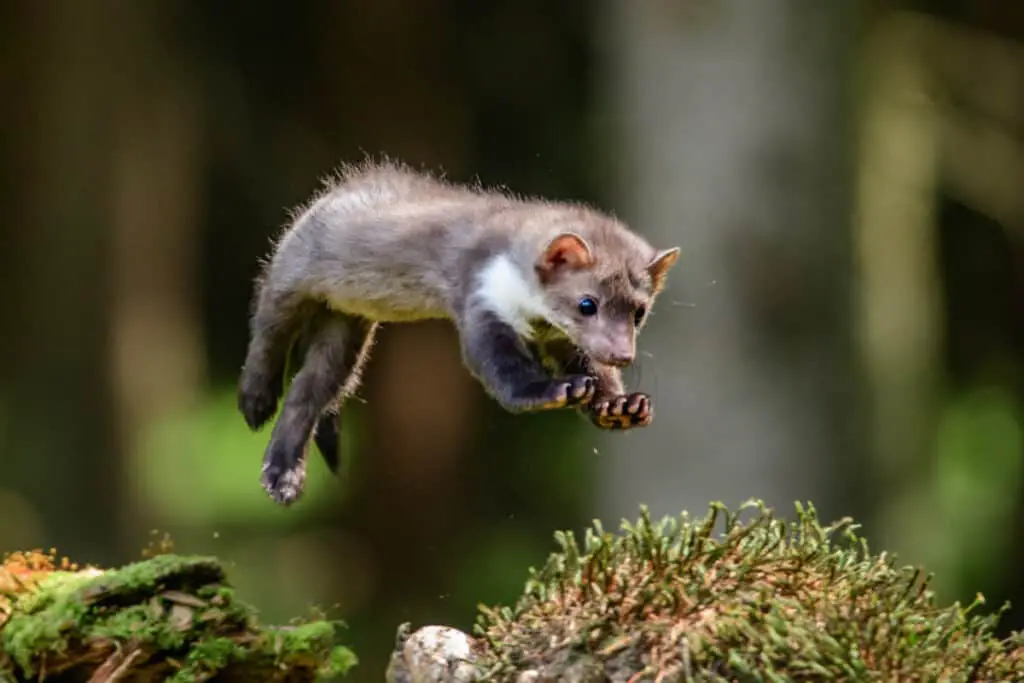The genus Martes, commonly known as martens, is a group of small carnivorous mammals that belong to the family Mustelidae. There are nine species of martens found worldwide, ranging from North America to Europe and Asia. These animals are highly adaptable and can be found in various habitats such as forests, grasslands, and even urban areas.
Martens have slender bodies with short legs and round ears. They are primarily nocturnal animals and feed on small mammals such as rodents, birds, and insects. Some species of martens also consume fruits and berries during certain times of the year.
Due to their elusive nature, these animals can be challenging to study in the wild. However, researchers have been able to gather valuable information about their ecology and behavior through radio telemetry studies and camera trapping techniques.
Despite being widespread across different continents, many species of martens face threats due to habitat loss, hunting for fur trade purposes or pest control measures.

Taxonomy And Classification
Martens, members of the genus Martes, are carnivorous mammals belonging to the family Mustelidae. This group includes nine species that inhabit diverse habitats across North America, Europe and Asia. These animals have a long evolutionary history dating back to the Miocene epoch, around 5 million years ago.
Despite their wide geographic distribution and varied ecological adaptations, all martens share common physical characteristics such as elongated bodies with short legs, sharp claws for climbing trees and dense fur coats.
Genetic diversity is an important aspect of conservation biology because it helps maintain populations’ resilience against environmental changes and diseases. In recent decades, several studies have been conducted on the genetic diversity of various marten species.
For instance, research has shown that American pine martens (Martes americana) inhabiting fragmented forest patches in Minnesota exhibit lower genetic variability than those living in larger continuous forests. Understanding how habitat fragmentation affects martens’ genetic diversity can help guide conservation efforts aimed at preserving these iconic creatures and their vital roles within ecosystems.
Habitat And Distribution
Martens are distributed across the northern hemisphere, from North America to Eurasia.
They inhabit boreal forests and mixed deciduous-coniferous forests, as well as some subalpine habitats.
Martens prefer areas with dense vegetation cover, such as shrubs or trees that provide hiding places and protection against predators like hawks or eagles.
In addition, they require access to water sources for drinking and hunting prey.
The geographical range of martens includes many different countries in various climatic zones.
However, their populations have been negatively affected by habitat loss due to deforestation and human development activities.
Despite this threat, conservation measures such as forest management practices aimed at preserving suitable marten habitats can help maintain healthy populations of these important animals.
Overall, understanding the preferred habitats and distribution patterns of martens is essential for effective conservation efforts aimed at protecting these unique creatures in both North America and Eurasia.
Anatomy And Physiology
The physical adaptations of martens have enabled them to survive in the harsh environments of North America, Europe and Asia. These animals are known for their long, slender bodies with bushy tails and short legs that allow them to maneuver through dense vegetation easily. Their sharp claws provide incredible grip while climbing trees or digging burrows. Additionally, they possess a thick coat of fur that helps regulate body temperature during extreme weather conditions.
Reproductive strategies play a significant role in the survival of the marten population. Martens reach sexual maturity at around two years old and mate between June and July. After a gestation period of about 220-275 days, females give birth to litters ranging from one to six kits in late March or early April. The young remain dependent on their mother until fall when they disperse into their territories.
Understanding these reproductive patterns is crucial for conservation efforts as it allows us to better monitor populations and develop management practices aimed at protecting this species’ genetic diversity.
Behavior And Ecology
Martens are solitary, territorial animals that have distinctive social behavior. They communicate through vocalizations, scent marking, and body postures.
Male martens establish their territories before the breeding season, which usually occurs in late spring or early summer.
Females give birth to litters of 1-5 kits in dens located within their territory. Young stay with their mother for about six months and then disperse to find their own territories.
Feeding ecology is an important aspect of marten biology as they are opportunistic predators that feed on a variety of prey including small mammals, birds, insects, fruits, and carrion. Their diet varies depending on the availability of food resources in their geographic location and time of year.
Martens have a high metabolic rate that requires them to consume approximately one-third of their body weight each day during peak activity periods such as winter when food is limited. To cope with these demands, they store fat reserves during times when food is abundant so they can survive periods without adequate nutrition.
Overall, martens play an important role in regulating populations of prey species in forest ecosystems where they reside.
These creatures serve an essential function in controlling prey populations in forests, which helps to maintain a healthy balance in the ecosystem. Additionally, they are an important food source for many predators, such as wolves, coyotes, and bears.
Moose are also valued by hunters for their meat, which is lean and high in protein. However, hunting regulations and conservation efforts are necessary to ensure sustainable populations of moose and to prevent overhunting.
Threats And Conservation Efforts
Conservation challenges facing the genus Martes include habitat loss, fragmentation, and degradation. Human activities such as logging, urbanization, agriculture, and mining have led to significant changes in forest ecosystems that affect marten populations. The reduction of old-growth forests has resulted in decreased availability of suitable den sites for martens.
Additionally, fragmented landscapes may limit gene flow between populations leading to genetic isolation and reduced diversity. Another threat to martens is human-marten conflicts. Martens can cause damage to property by entering buildings or chewing on vehicles’ wiring systems. In some areas where trapping remains legal, they are trapped for their fur or as perceived pests.
This conflict often leads to negative attitudes toward martens and can lead to retaliatory killings or other forms of persecution. Conservation efforts aimed at addressing these challenges include habitat protection and restoration programs, public education campaigns promoting coexistence with wildlife, and policy measures regulating hunting and trapping practices.
Such initiatives should be sustained if we hope to ensure the survival of the diverse species under the genus Martes.

Future Research Directions
Threats to the survival of martens have been well documented, and scientists and conservationists alike have worked tirelessly to protect this important genus. However, it is also essential to consider future research directions that will contribute towards a lasting conservation effort for these species.
One area that requires further investigation is the genetic diversity of marten populations. Research in other wildlife species has demonstrated that low genetic diversity can lead to decreased resilience against environmental stressors such as climate change or disease outbreaks. Therefore, understanding the extent of genetic variation within and between marten populations is crucial for developing effective conservation strategies that ensure long-term sustainability.
Another key area for future research on martens is population dynamics. Although much work has been done on monitoring trends in abundance, there remains a need for studies focused on factors contributing to population growth and decline over time. Such information would be valuable for improving management practices aimed at protecting threatened populations while promoting sustainable use of resources by human communities sharing their habitats.
Ultimately, continued scientific inquiry into the ecology and biology of martens will provide critical insights needed to safeguard these animals’ futures in our rapidly changing world.
Conclusion
Genus Martes, commonly known as martens, comprises of 9 species belonging to the family Mustelidae.
These carnivorous mammals are found in various habitats across North America, Europe and Asia. Their agile bodies aid them in climbing trees and hunting prey such as rodents, birds and insects.
Martens have a sleek body with fur that varies in color from dark brown to golden yellow. They possess sharp teeth and claws which help them climb trees easily.
Martens are solitary animals who only come together during mating season or when sharing food sources is necessary.
Martens face numerous threats due to human activities such as deforestation, trapping for their fur and habitat fragmentation.
Thus, conservation efforts have been put into place by organizations like The Nature Conservancy and Wildlife Conservation Society.
However, research on the ecological roles played by these creatures remains limited.
It is interesting to note that one study conducted on marten populations showed an increase in their population density after logging operations ceased in some areas of British Columbia, Canada.
This highlights how important it is to consider the impact of human activities on wildlife populations.
In conclusion, despite facing several challenges, genus Martes plays an important role within ecosystems they inhabit. Continued research will be crucial towards understanding their contributions to biodiversity and developing effective conservation strategies for their protection.

